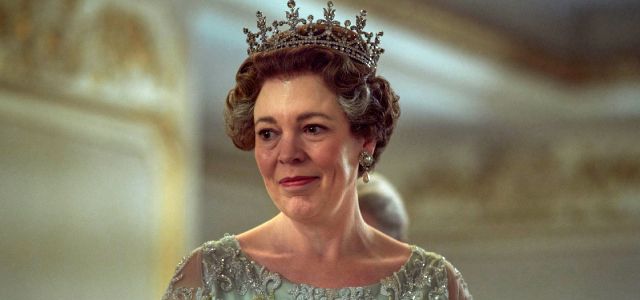While the planet mourns Elizabeth II, who died on September 8, The Crown goes back to the top Netflix. Peter Morgan’s series contributed in its own way to the immense popularity of the Queen of England.
No member of the royal family has existed in pop culture with such a successful blend of novelty, patriotism and self-mockery as Queen Elizabeth II. His two filmed encounters with James Bond for the opening ceremony of the London Games in 2012 and with Paddington Bear for his jubilee attest to this.
But fictitious portrayals of the Queen on screen, most notably in The Crown, have arguably played a bigger role in her renewed popularity with audiences, especially younger audiences.
The historical drama has made the royal biopic genre more popular than ever: by being available for streaming, millions around the world have been able to watch the Queen’s life story told like never before.
The “real” Elizabeth
At the time of the broadcast of the first two seasons of the series with Claire Foy in the role of Elizabeth II, the New York Times wrote : “Foy showed us a young woman full of life, transformed, and reduced, into a national symbol.“Discovering Elizabeth, as a young woman, in love, aware of the weight of the crown, has allowed many to empathize with the person and to forget (a little) her function.
Because the first seasons of The Crown cover a period when very little was known about the Queen’s private life and personality. The public knew the “basic” facts about him, but stories about his private life and personality outside of office were tightly controlled by the palace.
By having a young actress play the Queen, audiences could imagine being shown the ‘real’ story about what happened to this young woman, who by tragic circumstances became monarch much earlier than expected. or desired.
Alex Bailey/Netflix Claire Foy in season 2 of The Crown
The one we imagine
In seasons 3 and 4, Olivia Colman portrays an older Elizabeth struggling with middle age, motherhood, and the pressures of duty. The third episode of season 3 focuses on the Aberfan disaster – the 1966 coal mine collapse that killed 116 children and 28 adults – and the impact it had on the Queen.
In real life, the monarch visited the disaster site a day after the last body was removed, a full week after the tragedy. His seemingly belated response drew criticism, a moment that would be repeated decades later after Princess Diana’s death.
In The Crown, the Queen is shown retiring to her bedroom after the funeral, eventually dropping the mask and crying alone in private. By doing so and what Peter Morgan implicitly understands is that viewers of The Crown want to be shown the possibility that – behind the facade – lies a very different sovereign than the one we have been shown in public since. decades.
No one knows if the Queen shed a tear after this disaster, but Peter Morgan takes the liberty of imagining it. A reaction that just seems obvious. But it is undeniable that our perception of Elizabeth II changes after watching this episode, and others, which make her quite simply human. And in the most believable way.

Ollie Upton/Netflix
Olivia Colman in season 4 of The Crown
An undeniable success
The Crown has seen growing success with each season, with 21 million households watching the third season in its first month – a 40% increase from the previous season, Netflix data has revealed. Its popularity bodes well for the royal family, especially with younger audiences.
Giselle Bastin, associate professor of English at Flinders University in Australia, testifies to the impact of the series on her students withABC News : “I know from my own experience over the past 20 years that a lot of young Australians weren’t interested in the royal family, but suddenly they were.
The Queen has certainly grown in popularity with younger people in the UK and across the Commonwealth in recent years and I think Peter Morgan’s series is partly responsible for that.“
Even in death, the Queen’s legacy will live on as a mainstay in the cultural zeitgeist as audiences continue to enthuse about the challenges and triumphs of her decades-long reign.
